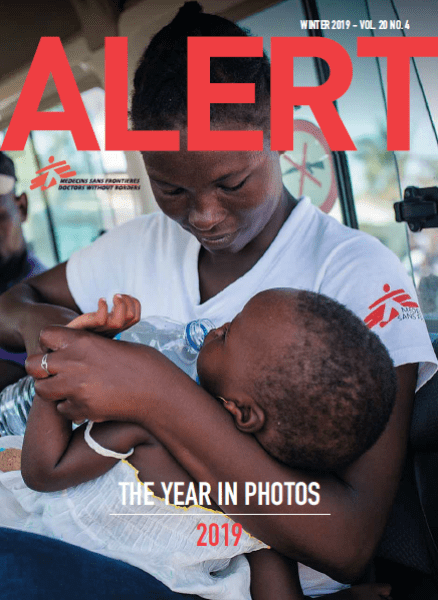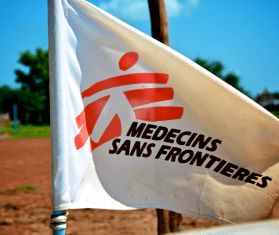Every year, millions of people die from infectious diseases that are treatable or preventable. The people at highest risk often live in poverty or in countries affected by conflict, mass displacement, or political unrest. When living conditions are so precarious, access to health care is limited and vaccination coverage is low.
These factors converge in Democratic Republic of Congo (DRC), which has endured decades of multiple overlapping conflicts and crises. An ongoing Ebola outbreak has drawn international attention and resources. However, more people this year have died from a massive measles outbreak that demands greater support from the international community. Doctors Without Borders/Médecins Sans Frontières (MSF) teams are working on multiple fronts and calling for other humanitarian actors to respond to the urgent needs.

We are still fighting to contain the Ebola outbreak in eastern DRC, which was declared on August 1, 2018, and is not yet under control. This is the worst Ebola outbreak on record in the country and the second largest epidemic of the disease recorded anywhere. MSF is caring for people with confirmed and suspected cases of Ebola in treatment centers, transit centers, and isolation facilities. We’re also helping to shore up infection prevention and control measures in health structures and supporting efforts to vaccinate health workers against Ebola.


None of our projects focus on Ebola alone—rather, our goal is to fight the spread of the disease with an integrated approach. Of the patients admitted to Ebola transit and treatment centers with worrisome symptoms, only 4 percent test positive for the disease. The rest require the kind of routine care that, for many in the region, has been out of reach for decades.

DRC is also reeling from a series of deadly outbreaks of measles that spread like wildfire across the country. With the international response remains largely focused on the Ebola outbreak, the measles epidemic has become DRC’s deadliest in nearly a decade: more than 4,000 people have died so far, nearly 90 percent of them children under the age of five.

No treatment currently exists for measles—the only way to prevent its spread is through inoculation. But DRC’s massive size and poor roads complicate the delivery of lifesaving vaccines. “Just getting vaccines to places where children need them is a huge task,” said Pierre Van Heddegem, field coordinator of MSF’s emergency measles team.
MSF teams are fighting measles in partnership with the Congolese Ministry of Health, vaccinating nearly 500,000 children in 13 of DRC’s 25 provinces in the first eight months of 2019 and treating more than 27,000 patients. But without a further massive mobilization of funding and resources to combat the spread of the disease, the outbreak could worsen.






